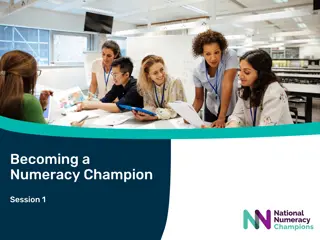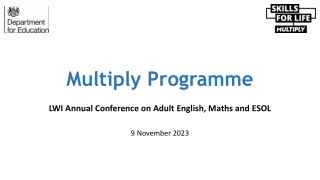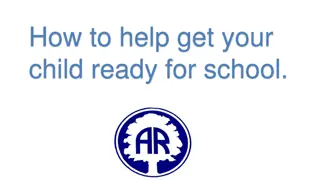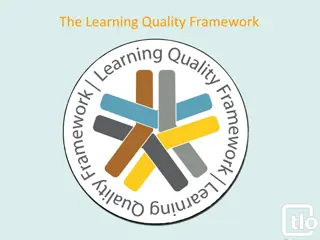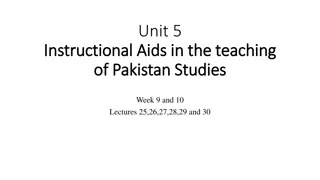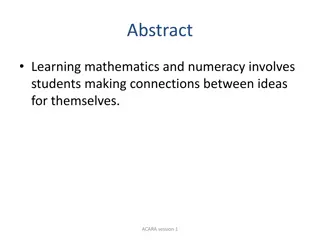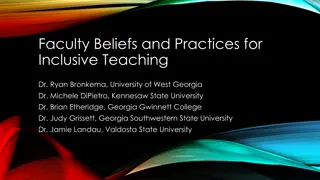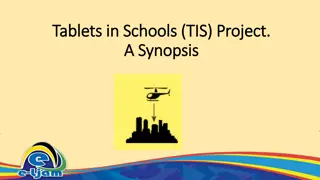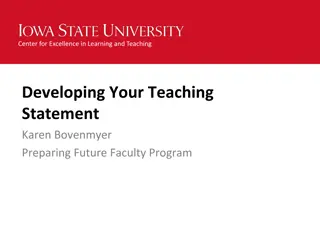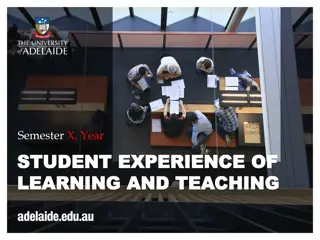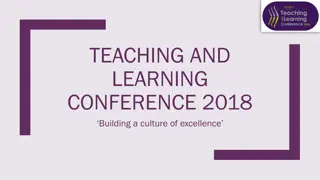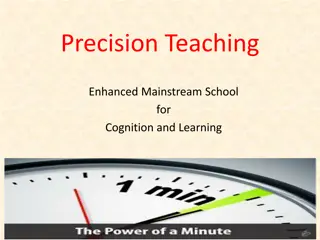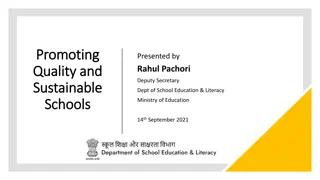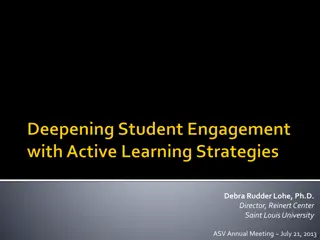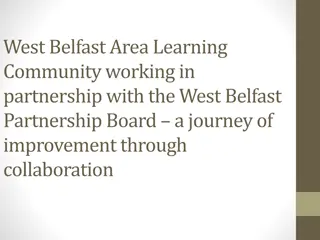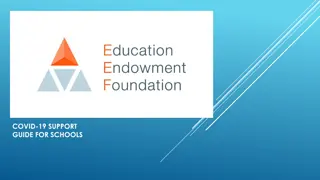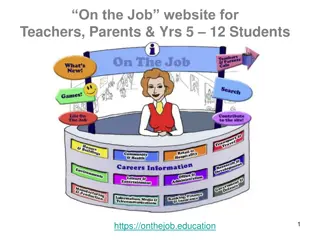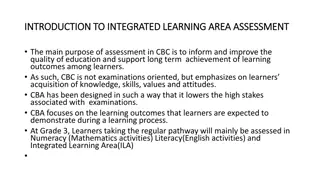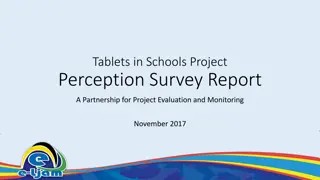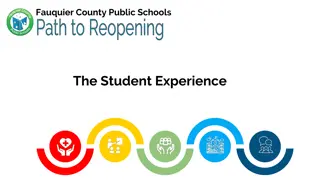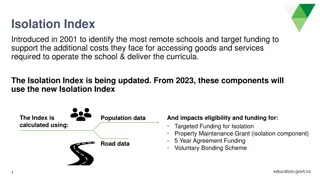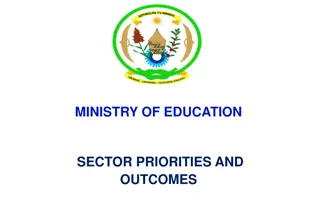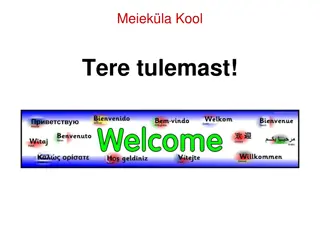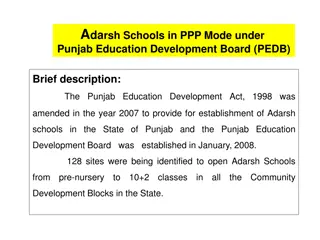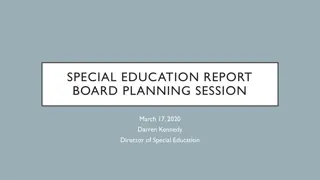Enhancing Numeracy Learning and Teaching in Schools
Explore the importance of improving numeracy education, understand guiding principles for quality teaching, consider success criteria, and analyze students' different learning styles through Euan and Cameron's examples. Discover resources and strategies to support students in numeracy development.
Download Presentation

Please find below an Image/Link to download the presentation.
The content on the website is provided AS IS for your information and personal use only. It may not be sold, licensed, or shared on other websites without obtaining consent from the author. Download presentation by click this link. If you encounter any issues during the download, it is possible that the publisher has removed the file from their server.
E N D
Presentation Transcript
Progressive Numeracy 2016
Numeracy- Learning Intentions Consider why we need to improve the learning and teaching of numeracy in our schools Explore the guiding principles underpinning quality learning and teaching of numeracy and SEAL which supports these. Investigate quality resources.
Success Criteria Appreciate why we need to improve Identify guiding principles and consider these in relation to our own practice Begin to develop progressive mathematisation in our classrooms. Locate NNPF, Numeracy Maths Hub and LoP and investigate how they may help with learning and teaching Identify the structure of a good lesson Integrate a variety of mental agility approaches and resources
Why do we need to improve? How would you solve? How would you support your pupils to solve? 36 + 48 =
Euan and Cameron Are Euan and Cameron at the same point in their learning? Listen to the language they use and the strategies they employ. What helps you to establish where each child is in their learning?
See Euan and Cameron video: https://www.youtube.com/w atch?v=cZnkgpUM0RA
Euan Finds it difficult to understand the problem when presented verbally Does not apply number bonds Is reliant on an algorithm to solve the task Adopts a count-by-ones strategy Requires to track counts in ones on his fingers Applies a process that he has been taught Uses mathematical language in the wrong context
Cameron He understands the problem Applies number bonds to 20 Uses a jump strategy to add and subtract Has quick recall Applies a strategy that he has developed Has language that enables him to explain his thinking
The Guiding Principles of Learning and Teaching of Numeracy Inquiry based learning Learning is inquiry based. Children are routinely engaged in thinking hard to solve arithmetical problems Initial and on-going assessment Learning is informed by ongoing assessment Learning is focused just beyond the cutting edge of children s current knowledge Learning approaches are carefully selected to meet the needs of the child The teacher understands the children s numerical strategies and deliberately engenders the development of more sophisticated strategies through mathematisation Observation of learning informs micro-adjustments within lessons Children talk about their strategies and learn to notate their thinking and formalise this over time Wait time is valued and given Zone of Proximal Development Quality crafted lessons Developing more sophisticated strategies Observing and fine-tuning learning Symbolising and notating Sustained thinking and reflection Through distancing settings and self checking their thinking children understand they are making progress Intrinsic satisfaction Based on Developing Number Knowledge; Wright R J, Ellemor-Collins D, Tabor P D, SAGE Publications Ltd 2012 (pp20-19)
Progressive Mathematisation The development over time of the mathematical sophistication of students knowledge and reasoning with respect to a specific topic, for example addition. Structuring numbers Extending the range of numbers Decimalising towards Base-ten thinking Unitising and not counting by ones Distancing the setting of materials Notating Formalising and generalising
What is SEAL? SEAL sets out a progression of the strategies children use in early number situations which are problematic for them. It consists of a clear progression through stages in children s development of early arithmetical strategies. Teachers are recognising the potential that SEAL has. It provides a framework that helps profile an individual s numerical knowledge and offers clear guidance in teaching approaches that nurtures their understanding. SEAL focuses on children s own understanding of number thus developing sound counting strategies that are based on understanding rather than processes. There is a clear tendency for low attainers in the early years to continue to be low attainers.
Share: In your classroom, how do you and your pupils establish- Where they are now? Where you/ they want them to be? How they will get there? How you/ they will know when they are there?
Where are they now? It is essential for a teacher to determine the extent of each child s knowledge. Consider what you are assessing and how they should be assessed.
Where are they now? How would you solve 6+5=11 doubles Use double/ near Count from 1 Use counters or other concrete materials Count on in 1s from 6 Use a jump strategy 6+4+1
Where do you want them to be? There is a need to establish clear objectives. It is important to have a sound mathematical knowledge and an understanding of how children s mathematical learning progresses. Think critically about the learning and teaching in your classroom and consider the current levels of knowledge. Consider how well you understand the aspects you are responsible for and if you could undertake professional development to raise your mathematical knowledge.
How will they get there? What does a good maths lesson look like? 15-20 mins Mental Agility Core Learning and Teaching Plenary
How Will They Get There? Mental Agility is.. the ability to carry out multi-step mental questions accurately, either without writing anything down or without a calculator. SSLN Professional Learning Resource: Numeracy and Mathematics Skills Mental Agility: Why? Mental agility is an essential skill. As adults, we need to estimate and calculate every day. This skill must be developed from the early stages. SSLN Professional Learning Resource: Numeracy and Mathematics Skills
How will they get there? Mental Agility is Efficiency finding the most efficient, shortest way to solve a problem Accuracy understanding number relationships and relationships between operations, sound understanding of number facts Flexibility understand that there are many ways to solve a problem, can use a different way to check solution Fluency all of the above combined
How will they get there? Talking About Number problem centred encourage use of a range of strategies provide opportunities to justify, describe, compare, explain errors are welcomed
See I agree Disagree video https://www.youtube.com/watch?v= CdNnVaTt7TE
How will we get there? Number Discussions 5 to 15 minutes Daily routine Designated area in classroom Vocabulary Use concrete materials and visuals All answers are accepted Poker face Teacher records Children share thinking HOW Answers and strategies are discussed great posters on http://displays.tpet.co.uk/#/ViewResource/id982
See mental agility progression video https://www.youtube.com/watch?v= PzyCBM02XkQ
How will they get there? Whole class learning and teaching Flexible or fluid groupings to meet individual needs Mixed ability groupings Certain approaches to differentiating the learning using ability groupings, i.e. using setting or streaming, may actually widen the attainment gap for children from disadvantaged backgrounds. Teachers use a range of differentiated strategies with all children, including flexible grouping, ongoing assessment to ascertain next steps, as well as a variety of daily numeracy activities that vary in complexity and open- endedness. (Knowledge into Action Briefing 1- Differentiated Learning in Numeracy and Mathematics)
Evaluation (teachers views) The numeracy training improved teachers perception and beliefs about their own abilities, especially in establishing at which numeracy stage a child is at the moment to plan future actions. This was excellent for helping me assess and plan for the children in my class who have gaps. It has also validated some of my practice. Almost half of our teachers expressed the need for sharing the knowledge, encouraging other teachers and providing whole school numeracy training. There's something for every ability stage + progression levels are clear. Wish every teacher could get the training.
Inverclyde Attainment Challenge Elaine.McLoughlin2@inverclyde .gov.uk @ACTcoachmodel


